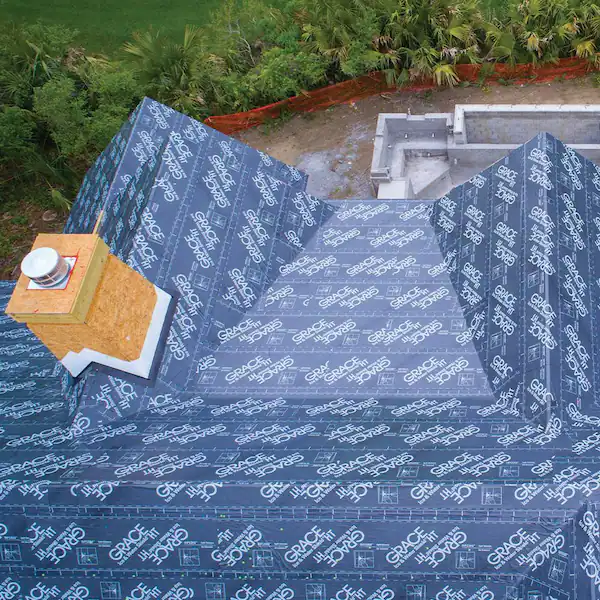Ice and water protector, also known as “peel and stick,” serves as a waterproof membrane for roof underlayment, shielding vulnerable areas from ice and water damage. Made with polymer-modified bitumen, these protectors are crucial for areas prone to ice dams or severe storms.
Ice and water protector products feature an adhesive back surface covered by a release film. During application, this film is removed to allow the membrane to adhere to the roof deck effectively, forming watertight seals
at end laps and side laps. Moreover, these membranes create a secure barrier around nail penetrations when shingles are installed.
Benefits of Ice and Water Protector
Covering your entire roof with ice and water protector can prevent leaks, especially after shingles are displaced by high winds. However, this continuous membrane can act as a vapor barrier, emphasizing the importance of proper attic ventilation.
Some ice and water protector products, like GoldShield™ and ArmourGard™ from IKO, offer superior moisture transmission rates, classified as vapor retarders by industry standards. Additionally, they can serve as exterior vapor barriers for foundations or basements.
Protection Against Risks
In stormy conditions, such as hurricanes, wind-driven rain can infiltrate beneath shingles. A fully adhered ice and water protector minimizes this risk by preventing water from reaching the roof surface.
Ice dams pose significant threats to homes, particularly in cold climates. These dams result from snow melting and refreezing, leading to water seepage under shingles and into the attic. Ice and water protector membranes effectively combat this issue, providing superior protection against water intrusion.
Installation and Application
Typically, ice and water protectors are installed on eaves, rake edges, overhangs, and valleys—areas susceptible to ice dams and wind-driven rain. Vent stacks, chimneys, and roof features penetrating the deck also benefit from this protection.
During installation, the membrane should be applied directly onto the roof deck, preferably before other underlayments. Overlapping courses of ice and water protector ensure comprehensive coverage and enhanced leak prevention.
Calculating Requirements
To determine the necessary amount of ice and water protector, consider the required width and length based on building codes and regional climate conditions. Width requirements typically extend above the highest expected ice dam level, while length measurements depend on the roof’s size.
While ice and water protector may not be mandatory everywhere, it offers invaluable benefits in safeguarding your roof against leaks and water damage. When correctly installed and paired with compatible products, these membranes contribute to the overall resilience and longevity of your roofing system.

